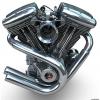I am new to this forum, so forgive my ignorance but I need to ask this question:
Would taking similar amounts of nicotinic acid not yield similar results as taking nicotinamide riboside? It is my understanding that nicotinic acid is not a sirt-1 inhibitor and increases nad+. Of course you would have to stand the flush, but if you divide the daily dosage in three parts it might work. It would also be considerably cheaper.
Regular ol' nicotinamide inhibits sirtuins; NMR activates them. Nicotinamide can be converted to nicotinamide riboside and/or nicotinamide mononucleotide but it's a difficult, costly process, and dependent upon something called NAMPT. If I'm not mistaken NMR bypasses this and goes through some other processes to activate sirtuins and increase NAD+ in cells. In the studies being published on NMR, some by the manufacturers such as Chromadex, it has been shown to reverse and prevent the "psuedo-hypoxic" state associated with aging and many diseases. When given to young, healthy rats, it made them "supercharged" (actually the term used in the literature, I believe). The effects of NMR should be much different, and much more noticeable than niacin or its amide.
great answer thanks.
Great answer - OK, but not exactly to the question asked, which was about nicotinic acid, not nicotinamide. Whereas nicotinamide seems to inhibit sirtuins, nicotinic acid doesn't. Different tissues in our bodies may need different NAD precursors:
“It should be realized that not every cell is capable of converting each NAD+ precursor to NAD+ at all times. Exp<b></b>ression of the eight step de novo pathway is required to utilize trp. Exp<b></b>ression of the Nampt pathway is required to utilize Nam. Exp<b></b>ression of either the Nrk pathway or nucleoside phosphorylase and the Nampt pathway is required to utilize NR. Finally, exp<b></b>ression of the Preiss-Handler pathway is required to utilize Na. Because tissue and cell type specific enzyme exp<b></b>ression differences exist, the precursors are differentially utilized in the gut, brain, blood, and organs. Understanding the unique aspects of metabolism of each precursor is necessary to define the mechanisms underlying the physiological effects and side effects of each. (…)”
“Classical feeding studies showed that exogenously added Na is a better NAD+ precursor than Nam in liver, intestine (16), and kidney (50). Similarly, rats fed Na showed elevated levels of NAD+ in the heart and Sidney in addition to blood and liver, which are sites of Na and Nam utilization (41). Classical studies have been corroborated by a recent report that mouse Naprt1 is expressed in intestine, liver, kidney, and heart. In addition, human Sidney cell lines are able to use Na to increase intracellular NAD + concentration in a manner that depends on the NAPRT1 gene.”
Nicotinic Acid, Nicotinamide, and Nicotinamide Riboside: A Molecular Evaluation of NAD+ Precursor Vitamins in Human Nutrition
Annual Review of Nutrition, Vol. 28: 115-130. Katrina L. Bogan and Charles Brenner











































